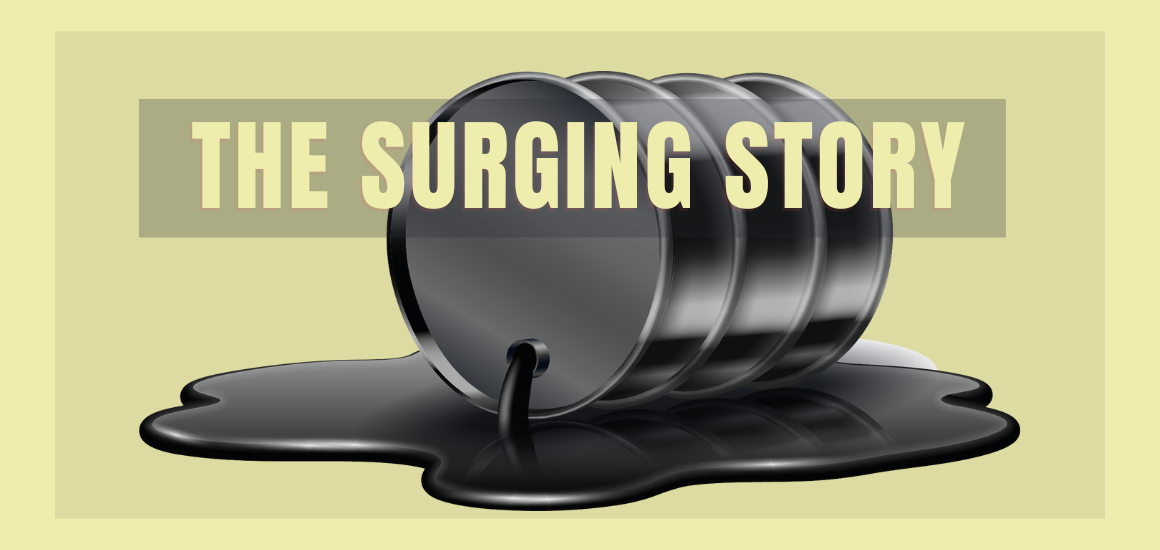|
Getting your Trinity Audio player ready...
|
Think of this, you head to the gas station, and the price at the pump has jumped significantly. You’re not alone; it’s happening globally. But do you know why? Well, it’s all tied to the story of rising crude oil prices that is reshaping India’s economic landscape in 2023.
The Oil Price Surge Explained
Crude oil is the lifeblood of the global economy. It’s what powers our cars, heats our homes, and fuels industries. In 2023, the price of this essential commodity will be on a roller-coaster ride. A key player in this drama is Brent Crude, which has surged by a whopping 19 percent. West Texas Intermediate (WTI), another oil benchmark, has followed suit. Why? Well, it’s all about supply and demand.
The Economic Status of the Countries
Supply Shortages and Production Cuts
Let’s say you have a favorite snack, but suddenly, it’s in short supply. That’s what happened with oil. The United States, a big player in shale oil production, had a bit of a slowdown, which made oil supplies tight. To make matters more complicated, major oil-producing countries, like Saudi Arabia and Russia, decided to produce less oil, causing concerns about a “supply deficit.”
India’s Oil Predicament
So, why should you care about all this oil talk? Because India, as the third-largest oil consumer and importer worldwide, is right in the middle of this drama. To understand why it’s a big deal for India, let’s break it down:
The Emerging Markets: Who’s Who and What to Expect?
1. India’s Reliance on Oil Imports
Suppose you had to buy almost all your groceries from a nearby store. That’s what India does with oil—they import a whopping 85 percent of it! Now, think about your favorite snacks getting more expensive. That’s what’s happening to India’s oil imports. Experts say oil prices might shoot up to $105 per barrel this year, which is way higher than the current $93.
2. Impact on Fuel Prices
Now, let’s talk about the everyday stuff—petrol and diesel. When global oil prices rise, your trips to the gas station could get pricier. This affects not just your car rides but also the cost of transporting goods. Consider it: higher fuel prices mean moving your snacks from the factory to the store costs more.
3. Domino Effect on the Economy
So, it’s not just about filling up your car. The ripple effect spreads wide. For starters, the car industry, which employs many people, might take a hit. If people can’t afford to drive, they won’t buy as many cars. And if you take the bus or train, you might see ticket prices go up because those vehicles need fuel, too. The companies that deliver things to your doorstep? They’ll charge more because their fuel costs are up.
4. Festive Season and Economic Growth
India’s economy usually boosts during the festive season, when people buy more stuff. But this year, rising oil prices might make people tighten their belts. When you spend more on fuel, there’s less left for everything else. So, the festive season might not be as merry as usual.
5. More Economic Challenges
Remember those numbers? Every $10 increase in oil prices widens India’s deficit by 0.5 percent. That’s not good news for the economy. Plus, the stock market could get shaky if oil companies keep changing petrol and diesel prices.
Wrapping it Up
So, there you have it—the story of surging oil prices and how it’s affecting India. Think of it as a chain reaction, starting with the cost of filling up your gas tank and ending with the health of India’s economy. As you watch those numbers climb at the pump, remember that they’re part of a bigger story that’s unfolding right before our eyes. Stay tuned as India navigates these oil-price waves, making choices that will shape its economic future.






